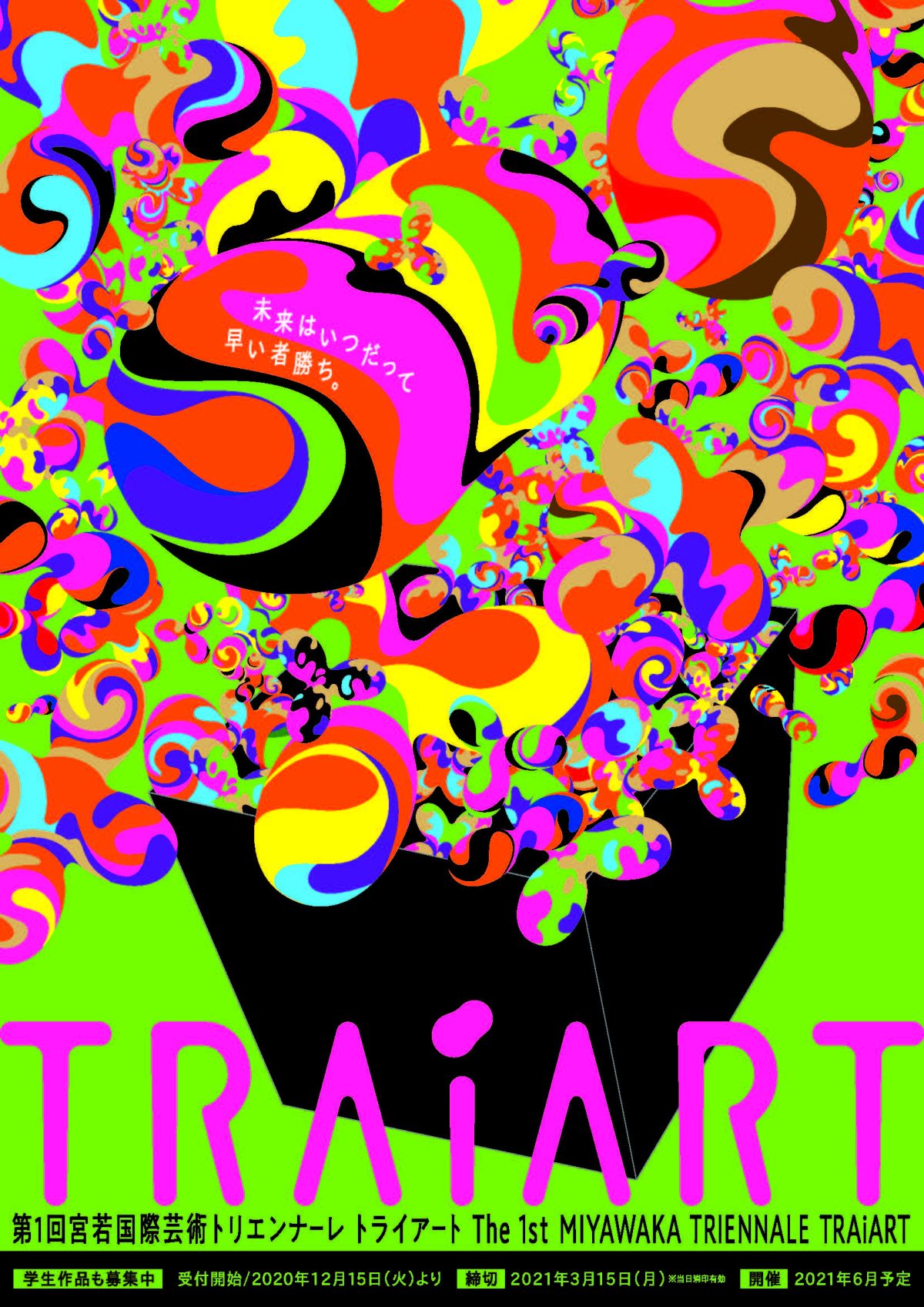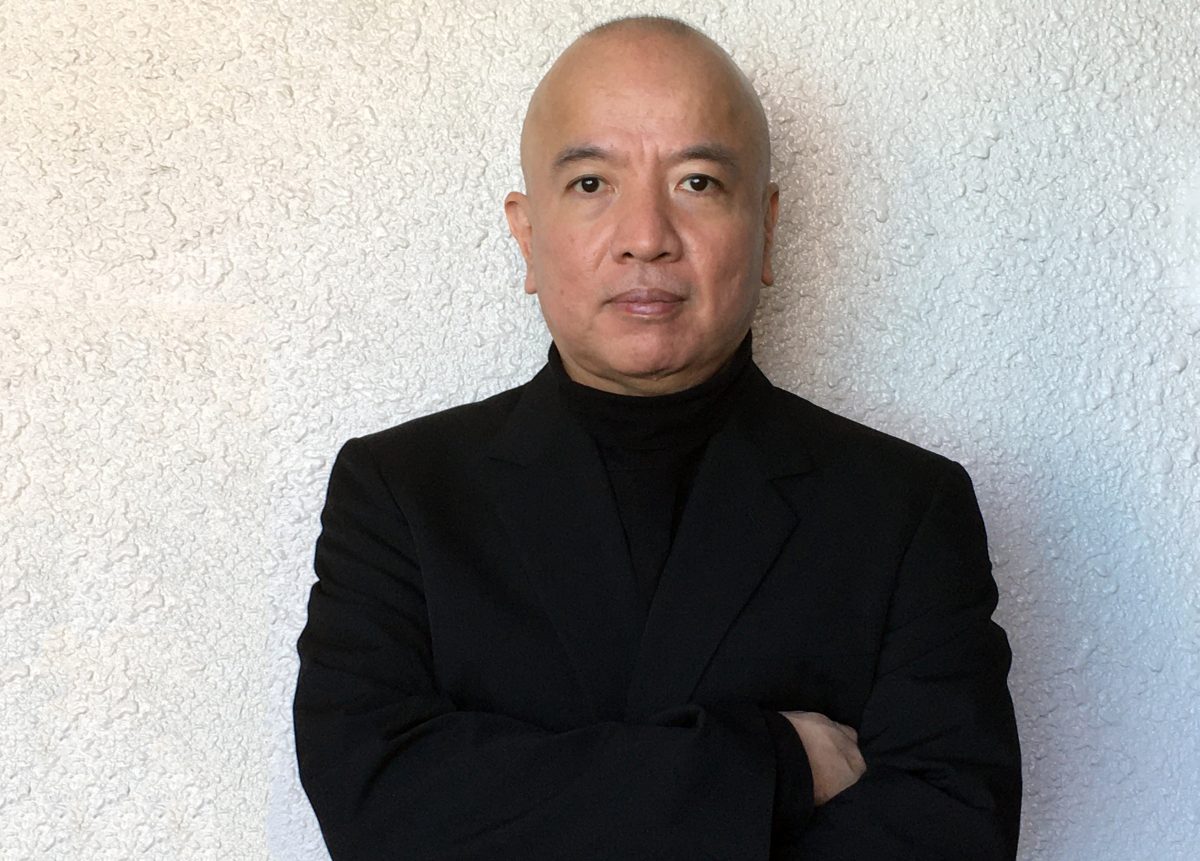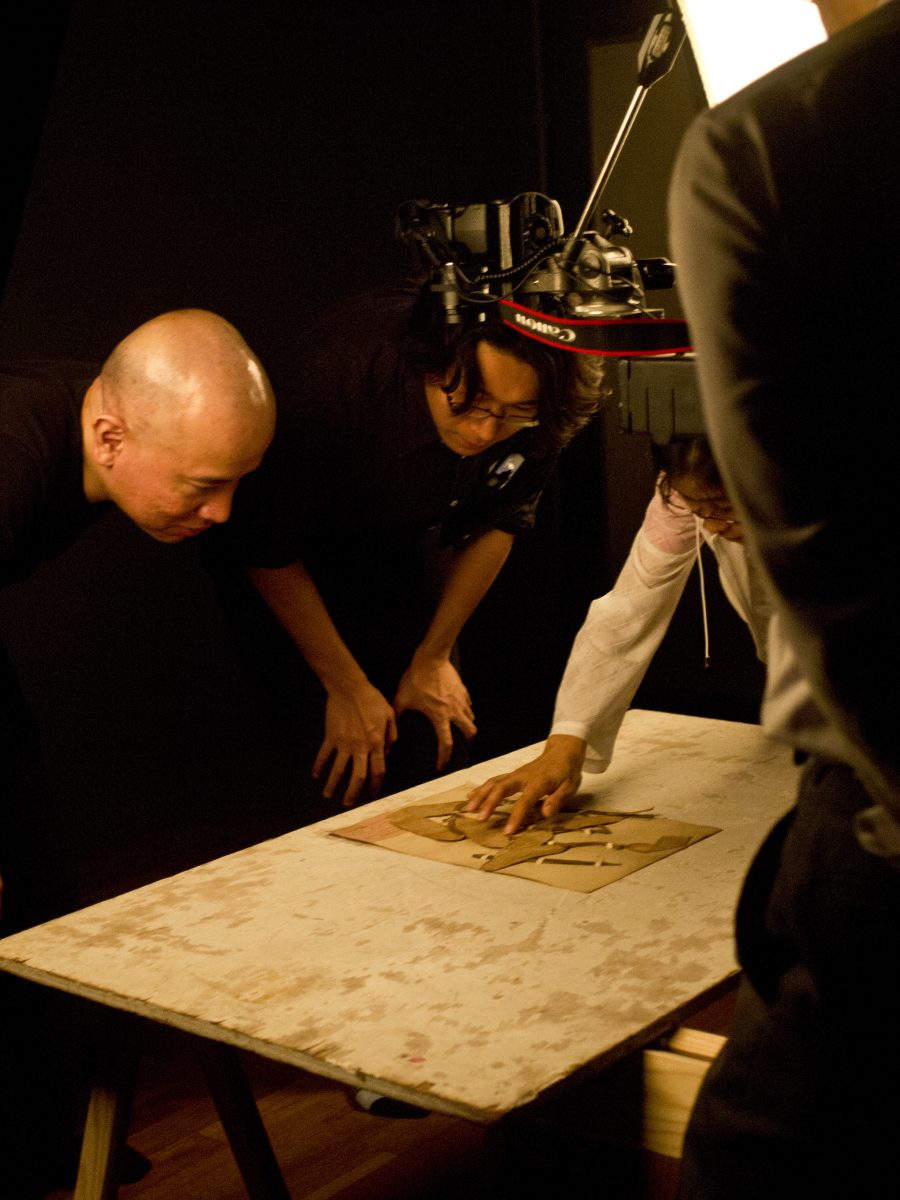ReportsInterview with TRAiART for the Miyawaka International Triennale vol.01 Toshifumi Saito (President of the Student Competition Jury)2021.3.10

Interview with Associate Professor Toshifumi Saito, President of the Jury for the Student Competition, Miyawaka International Triennale ” TRAiART”, “Art can be an opportunity to reconsider oneself and society.”
The first Miyawaka International Triennale “TRAiART” is scheduled to be held in June 2021. What kind of impact will this event feature young artists with Kyushu’s ties and an art competition for students from Japan and abroad have on Miyawaka City? Also, what role will Kyushu University play in the industry-government-academia collaboration? We asked Associate Professor Toshifumi Saito of the Kyushu University Faculty of Design, the jury’s head, for the student competition.

–The Miyawaka International Triennale is an industry-government-academia collaboration between Trial Holdings Corporation, Miyawaka City, and the Center for Future Design Studies/Kyushu University Faculty of Design. What can we expect from the collaboration of organizations with different values and domains?
(SAITO) Miyawaka City is a city located between Fukuoka and Kitakyushu. It is blessed with wealthy nature, undulating terrain, and hot springs. I think it is a unique place geopolitically. It is exciting to see a trial facility being built to study the cutting edge of distribution and IT fields that will lead the Beyond Corona era. In a region rich in nature, a large corporation is working to revitalize the region. If things that have never intersected before can intersect, something beyond our expectations may happen.
Moreover, the Triennale will bring together the power of the land and cutting-edge technology. I want to convey the land’s appeal through the artworks, and I expect that the information transmitted from the Triennale and the community that emerges will positively affect the region and society. The job of “design” is to organize information so that it can produce positive effects. In other words, it is the role of Kyushu University Faculty of Design.
–What kind of “design” have you done in the projects you have been involved in?
(SAITO) When I was working for a company, I was mainly involved in promoting exhibitions and entire museums in Tokyo. After becoming independent, I started to work on many projects such as curation for companies supporting artists and PR communication for cultural administrations. Many of the final products were posters and promotional videos, but I believe these are just “results.” The most important thing is to convey the appeal of the exhibition or museum as straightforwardly as possible. I think this is true not only for the location and content but also for promotion and related design in general.
–Among the many projects you have been involved in, is there one that left a strong impression on you?
(SAITO) The promotion of the Kyushu University Museum in 2012 is still exciting to think back on. The museum’s exhibition room was a reused classroom at the Hakozaki campus, and we thought, “Honestly, people will not come here” when we put up posters around town. However, Kyushu University has developed over 7.4 million items over the past 100 years, making it one of the largest collections of its kind in Japan. Among them, there are many specimens of insects, plants, and minerals available at Kyushu University. I wondered if there was any way to convey the appeal of this collection.
That is when we came up with the idea of the “Museum Bus”. We filled the Nishitetsu bus space, which is usually reserved for corporate advertising posters, with posters of the museum’s specimen collection. We photographed each specimen one by one and added catchphrases that matched the specimen’s appeal, creating a poster that was true “THE advertising poster “. We asked researchers to be present during the photoshoot to learn more about the specimens before creating the poster. I think it turned out to be a perfect advertisement that conveyed the specimens’ appeal straightforwardly and showed the researchers’ inquisitiveness and enthusiasm.

Thanks to the bus running on the route for nine months, updating the poster every month covered many media such as TV, newspapers, and the web. Attracting customers is one of the advertising objectives, but even if they do not come to the university, it is essential to think that Kyushu University is doing something interesting. Creative direction is to improve communication from the perspective of “how can we convey the appeal of things better?
–What is the power of art, and what can we expect from it in a society currently facing many problems, such as the COVID-19 pandemic ?
(SAITO) Precisely because of the times we find ourselves in, artistic expression is more important than ever. It provides an opportunity to reflect on a lot of things — both for the creator and viewer — and fosters communication. That is really its raison d’être. Fostering communication is in turn an opportunity to think about oneself. That’s because that reflection ultimately comes down to the fundamental question of our own raison d’être as human beings. My hope is that art will serve as an opportunity to explore that.
–The theme of this Triennale is “Musubu(connect)”. What kind of relationship do you think will be created for people visiting and involved in the Triennale?
(SAITO) I think “Musubu(connect)” means that people will be able to think about society and things around their own lives as their affairs, rather than being trapped in a specific place or organization. I hope that companies and local governments, and the audience will be able to think of the Triennale and art as their own thing.
–What do you mean by thinking of art as one’s own thing?
(Saito) When people come into contact with inspiring expressions, they want to express themselves and create art. Even if you cannot draw a picture or write a song, if you start thinking, “If I change the arrangement of things in my room, it will change the way I see things,” I think that means the expression has been conveyed to the person. To understand art is not to read explanations and feel like you understand or to understand techniques and theories. It is about being able to actively connect to things and knowledge that change you, no matter how trivial they may seem.
— “TRAiART” will include young artists with ties to Kyushu and a student competition. What do you think is the significance of working with young artists on a project?
(SAITO) Young people are dynamic and energetic. Stereotypes do not bind them, and their ideas are very accessible. I feel that it is easy for them to create new things. In the past, I have tried to involve young people as much as possible in my projects. I want TRAiART to be a meaningful initiative for young artists to participate in, as it will be a step for them to reconsider their past activities and expressions and move into a new field.
–What are your aspirations for “TRAiART”?
(SAITO) There are Triennale of all shapes and sizes across Japan, but TRAiART is held at a CX (* Note 1) facility, and it is also being hosted in a regionally unique place. Moreover, the effects of COVID-19 have made it difficult for people to go to these events with the ease they once could. So how should we go about communicating and disseminating information about artists’ involvement and the works they create? What impact will it have on people? There is this potential for new forms of communication, precisely because of the times we find ourselves in. Plus, the Triennale, as the name suggests, will be held another three years after this. My thinking is that as we continue this effort, the changes and communication it fosters will be a major point of appeal. I’m looking forward to it.
Note 1: Corporate transformation: Refers to conducting corporate activities towards the development of new technologies, values, and social goals in order to lead the new era.
